On the way to hypersound
It was he who became the first aircraft that could, albeit only slightly, go beyond the boundary of the Earth’s atmosphere. Installed on it 22 August 1962 g. Unofficial height record (107960 m) was surpassed only after 42 year. The speed record for manned aircraft set by William Knight on X-15-2 3 October 1963 g. (7273 km / h) has not been closed yet. But the program X-15 ended, and not giving a direct continuation.
27 March 2004, off the coast of California, the X-52A unmanned bomber was launched from the B-43 bomber. With the help of the starting accelerator, the experimental apparatus reached the altitude of 29 km, where it separated from the launch vehicle. Then earned his own ramjet engine. And although he worked for only 10 seconds, X-43A developed 11263 km / h speed. At that speed, traveling from Moscow to New York would take 41 a minute.
But for this it is necessary to solve a lot of technical problems. The most important of them are the creation of an engine capable of stably operating at hypersonic speeds, and the heating of the structure when flying in the atmosphere, the so-called "thermal barrier".
Of the variety of jet engines for promising hypersonic devices are suitable several: turbo-ramjet, rocket ramjet and straight-through. When flying in the atmosphere, obviously, it is advisable to use engines, to some extent using the "free" oxygen of the atmosphere. The most promising are direct-flow engines. At first glance, their design is extremely simple: a shock wave generator that provides compression and braking of the flow, fuel injection nozzles, combustion stabilizers and a nozzle. There are practically no moving parts in the engine, except that the fuel supply pump.
Research in the creation of a scramjet has been going on since the 1950-ies, but despite the seeming simplicity of the concept, the aero- and thermodynamic problems of flying at high hypersonic speed are so complex that it has not yet been possible to create a workable engine suitable for normal operation of the aircraft.
On hypersonic devices work not only in the United States, but also in Europe. The French National Aeronautics and Space Administration (ONERA) began research on hypersonic speeds in the early 1990-s. In 1992-1998 together with the companies Aerospatiale, Dassault Aviation, Sep and Snecma, the program PREPHA (1992-1998) was carried out, focused on creating a ramjet for the upper stage of the spacecraft. 1997 to 2002 ONERA, together with the DLR program JAPHAR explored the concept of a hypersonic aircraft with a ramjet powered by hydrogen. Practically at the same time, in conjunction with the MBDA France program of the PROMETHEE, the possibility of creating an apparatus with a ramjet variable geometry (as applied to long-range air-to-surface missiles) was investigated.
However, so far only Russia possesses the necessary scientific and technical groundwork allowing it to compete with the United States.
A scientific group engaged in research of the scramjet workflow was organized at MAI at the 201 department at 1969. The team was based on a number of employees of the Red Star ICB, the basic equipment was transferred from the Research Institute TP (now the M. Keldysh Center). The most dynamic work in the field of research and development of scramjet combustion chambers was carried out in the period from 1977 to 1990. According to the results of these works, the team of employees in 1989 was awarded the prize of the Council of Ministers of the USSR. But at the beginning of 90-s, state funding for this area practically ceased.
At the same time, the accumulated experience of conducting fire experiments and the results of the work attracted the attention of a number of European organizations. In 1992, the division of the laboratory of the 201 department was transformed into the Aerospace Research Center, which carried out work on international contracts. The main partner of the MAI was the association Aerospatiale (France) (now MBDA France).
In the USSR in 1991-1998. according to the Kholod program, flight experiments were conducted on a flying laboratory (C-200 SAM) with the testing of a hypersonic ramjet engine created at the Raduga GosMKB.
History of the federal state unitary enterprise "State machine-building design bureau" Raduga "named after A.Ya. Bereznyak" (GosMKB "Raduga") started in 1951. By a decree of the Council of Ministers, the task was given to master the new “B” theme for the enterprise - the creation of cruise missiles.
Then came the minister’s order aviation industry, according to which a branch of OKB-155 was organized at the plant (now the design center of RSK MiG). The first project of the enterprise was the completion and transfer to serial production of a jet aircraft-shell KS, developed in OKB-155. Then came the KSS, KS-7 cruise missiles, which brought the team the first fame in the aviation world.
One of the best developments of the design bureau at the beginning of the 60s is the X-22, which became the ancestor of a whole family of rockets.
In 1966, the OKB-155-1 branch was transformed into an independent organization, the Raduga Machine-Building Design Bureau.
The staging work of the design bureau in 60's was the hypersonic X-45 anti-ship cruise missile, designed to destroy aircraft carriers, and in 1970, the enterprise team joined the work in the framework of the Spiral project.
Supersonic low-altitude anti-ship missile 3М-80 "Mosquito" in its characteristics surpasses all existing foreign counterparts today. To bring it down is almost impossible. Only due to its kinetic energy she is able to break the ship in half even without a warhead.
One of the most important areas of work of the ICD is the development of hypersonic speeds. Back in 1973-78 and in 1980-1985. Several prototypes were developed and tested for testing hypersonic aircraft engines.
At the beginning of the 1990's the designers of "Rainbows" developed the X-90 hypersonic cruise missile. Work on the missile was suspended in 1992, but for testing various solutions based on the X-90 there was a hypersonic experimental aircraft (GELA). In addition, on the basis of the honored X-22, the ICD team proposed a flying laboratory "Rainbow D2".
In 1993, the active implementation of the Burlak-Diana project began. The further development of the project will be the creation of a new launch vehicle "Burlak-M" with a hypersonic jet engine.
In 2004, the Federal State Unitary Enterprise GosMCB Raduga was transformed into an open joint-stock company and became a full member of Tactical Missile Weapons Corporation OJSC.
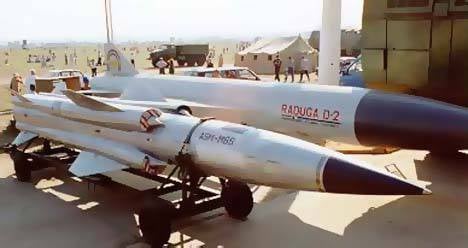
A unique product, which still has no analogues, was publicly demonstrated at the MAKS-97 exhibition at GosMKB Raduga. Hypersonic flying laboratory "Rainbow D2" was created on the basis of the X-22 aviation missile and was designed to perform flight experiments and to confirm simulation programs.
“Rainbow D2” is a modernized X-22 cruise missile capable of flying at a speed exceeding M = 6. The mass of the payload - experimental equipment - up to 800 kg.
However, work on the development of hypersonic speeds in the USSR did not come to a worthy conclusion. The reason is not only financial, but also the extreme complexity and multifactorial nature of the tasks facing the creators of hypersonic aircraft.
Today, the solution of the problem is seen in a phased approach to "hypersound", which in turn implies the creation of flying laboratories, which allow real-world technical solutions and technologies to be developed in real conditions of free flight, allowing further development of hypersonic aircrafts suitable for practical use.
This year, at the 48 air show at Le Bourget, France and Russia announced that the work on the program of the experimental hypersonic device LEA is entering the flight test phase.
LEA project launched in 2003
Creating an experimental scramjet depends on solving two key problems: the development of materials and technologies for the manufacture of low-weight combustion chambers with an internal structure suitable for cooling with fuel, and confirmation of the positive balance between engine thrust and aircraft resistance in flight.
Most of the preliminary results can be obtained on accessible ground test equipment and using classical numerical simulation. Therefore, an important role in the LEA program is the METHYLE test bench, created on the basis of a similar setup developed for the JAPHAR program. The bench should provide the ability to simulate the flight of prototypes of the aircraft using different types of fuel at speeds corresponding to the numbers M = 7,5 at temperatures up to 2100 degrees. WITH.
On the other hand, it is necessary to demonstrate the reliability of the prediction of a positive balance of thrust forces and resistance of a hypersonic aircraft. To complete this crucial step, MBDA-France and ONERA led a European scientific program called the LEA.
The main directions of the LEA program:
the choice of methods for the study of GLA using ground tests and numerical simulation,
selection of research tools to achieve the goal (experimental or numerical),
the use of selected tools to develop an experimental model of LA,
approbation of these techniques in a series of flight experiments.
The objective of the LEA project is to conduct a flight experiment to confirm the performance of the concept of a wide-range ramjet engine with a mechanically controlled combustion chamber.
As a result of the work currently underway on the 2 Phase, a detailed HLV design should be obtained for the first series of tests in a free jet in order to check the aerodynamic characteristics. The tests should begin in 2010.
Given the extensive experience of Russia in the practical development and testing of hypersonic aircraft, the first contract was concluded in 2004. With 2004, the joint activities of MBDA-MAI, in accordance with the order of the President of the Russian Federation, were given the status of international military-technical cooperation. The main goal of this work is to conduct flight tests of a wide-range ramjet on a hypersonic aircraft.
"Work under the contract is being carried out in stages and some progress has been made at present, which allowed the signing of another contract at Le Bourget, including working with the LEA in-situ apparatus in Russia," said the first deputy director of the Federal Service for Military technical cooperation (FSMTC) Alexander Fomin.
The agreed schedule envisages four flight tests in 2012-2014.
MBDA, ONERA, Gattefin SAS, Rosoboronexport and Raduga design bureaus take part in the joint work. The design of the device will be carried out by MBDA and ONERA, Gattefin SAS will build the LEA in France.
Considering the extensive experience of GosMKB Raduga in practical development and testing of hypersonic aircrafts, the LEA program management signed a contract with the Rosoboronexport FSUE to conduct flight tests of the device. The Flight Test Center (PIC) is also involved in the preparation and implementation of the LEA program. MMGromova, MAI and CIAM. The overall coordination of the work of the Russian participants is assigned to Rosoboronexport. Flight tests of the device will be held in Russia. For this purpose it is planned to use a flying laboratory created on the basis of the Tu-22М3 bomber. In addition, TsAGI will conduct aerodynamic blowdowns of the apparatus, and the Flight Research Institute named after M.Gromov will provide an Il-76 aircraft for telemetry testing.
It is planned to perform four launches from the Tu-22М3 aircraft. The device will fly at a speed corresponding to the number M = 8 approximately 20-30 seconds.
The latest LEA configuration, represented by MBDA and ONERA, is significantly different from previous ones. The changes affected the air intake and the tail end of the airframe with feathers. The fuselage length was shorter: in the original aircraft it was 5 m, and in this project it was 4,2 m. The designs of the head of the hull and the air intake of the LA LEA were worked out on models on the scale of 1: 3 in 2004-2005. It is currently being tested in the wind tunnel of the ONERA Office. Full-scale tests of LEA with a jet engine with the numbers M = 6 are supposed to be held in the spring of 2010, and with the numbers M = 7,5 - in the autumn of 2011.
Flight tests will allow developers to decide on the design methodology and the final choice of the direction of further development of the European prospective hypersonic aircraft.

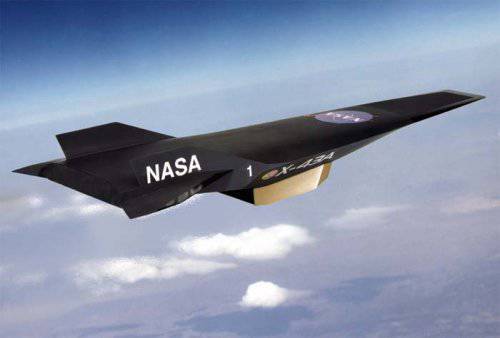
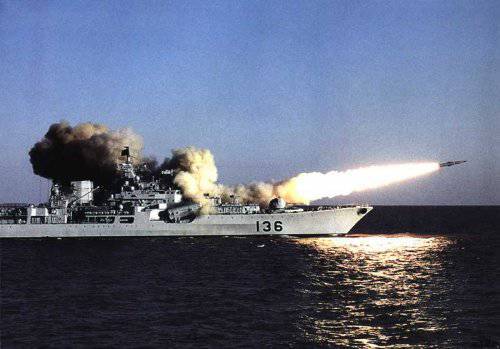
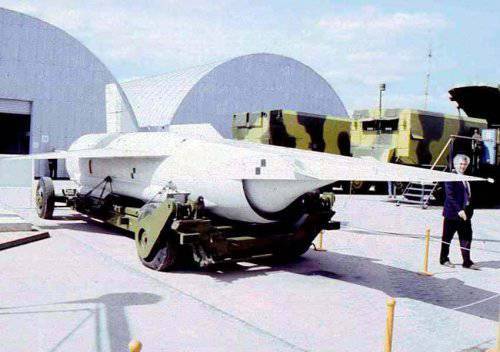
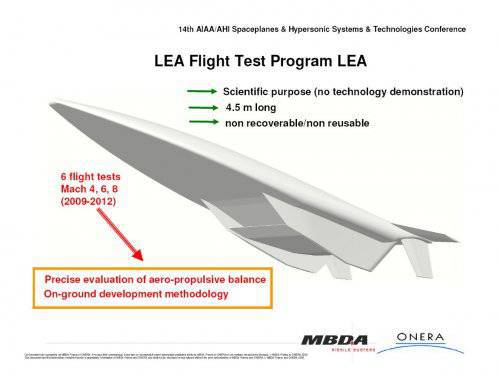
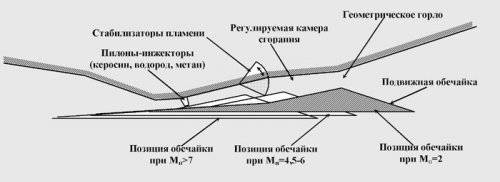
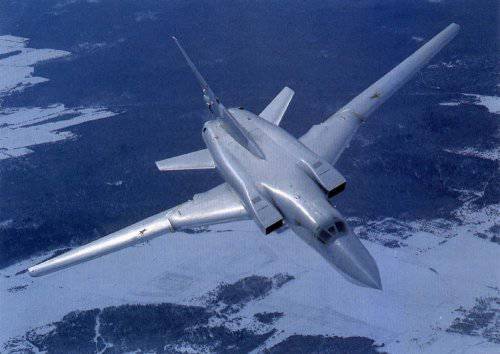
Information